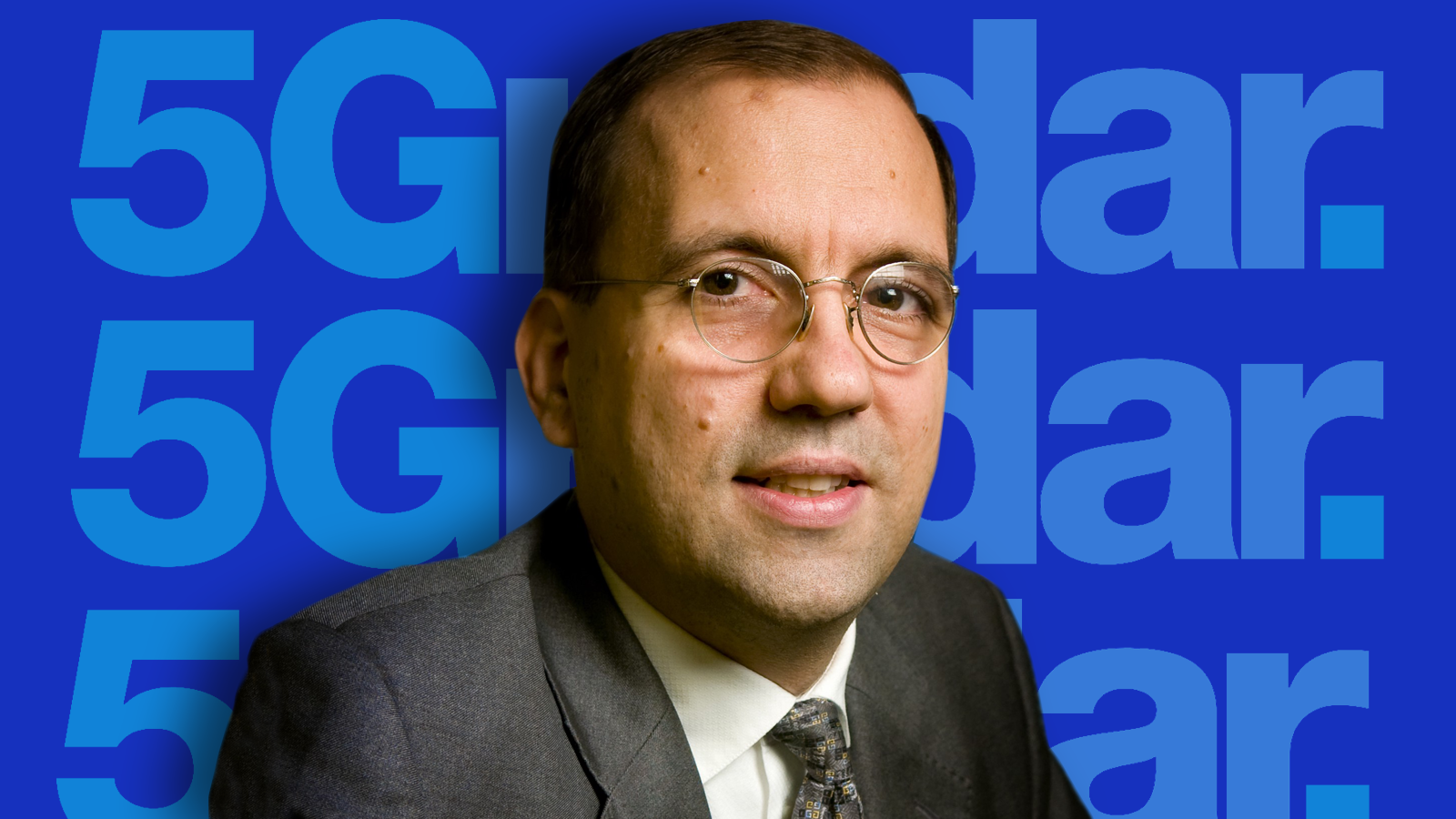Discover how private 5G networks are delivering the lowest latency
Jean-Paul Smets, CEO at Rapid.Space, discusses how private 5G networks will deliver the latency required for a new generation of automation.

The fact that 5G is so mysterious to some people, to the point where they think it can cause covid-like symptoms, is really telling, and reveals how poorly 5G providers are doing at explaining the basics of the tech.
Physically, 5G lies at the very top of the electromagnetic spectrum. It’s a radio frequency and is actually less dangerous than sunlight. To put it even more simply: 5G is basically a 4G software update. So let’s talk about what that means, in terms of how it will revolutionize the world’s workforce.
The rise of low latency networking
For a conversation to happen, one person should speak at a time while the other listens. Such an interaction can take maybe three seconds: I speak the question (one second), you think about it (one second), and reply (one second). That three-second duration is called latency: the lag between what I say, and how you respond. Three seconds is extremely high latency. When you call someone on the moon using the radio, it takes two seconds for the signal to reach them and two seconds for their response to return to earth. The greater the distance with radio communication, the greater the latency.
Now, if I have 100 people asking 100 questions at the same time, I get 100 responses after 3 seconds. The amount of people talking is the bandwidth of the interaction. Simply put, that’s the difference between bandwidth and latency. Bandwidth grows as the number of respondents increases, latency stays the same.
"The idea with 5G is to remove lag when controlling robots, when controlling machines. This new technology will be used to power the next generation of industrial robotics."
Jean-Paul Smets.
And what 5G does is introduce the ability to define parameters that previously fixed in 4G. These parameters affect bandwidth and latency; they lower latency and they increase bandwidth. That’s all.In 4G radio transmissions, ‘time’ is cut into time slices or time slots. So, when I speak you listen. But let’s say we’re talking about sending controls from a joystick to move a robotic arm – when you press on the controls you want an instant response. With 4G, the time slots (speak/listen/respond) are cut into slices of 10 milliseconds. You input the control, it travels to the robotic arm, the arm moves: 0.01 + 0.01 + 0.01. The idea with 5G is to remove lag when controlling robots, when controlling machines. This new technology will be used to power the next generation of industrial robotics.
In 5G, the time slots are cut into increments of 0.001 seconds. That means, if I’m remotely controlling a robot with a joystick and I want it to go forward and then want it to steer around an object, I need to have a low-latency network. When I tell the robot to steer left and it takes 0.01 seconds to get to the robot, and 0.01 seconds to reply, the robot might run into something.
In Paris, we are working with a company for an interesting new use case for this application. They sell robots that will be used for remote office cleanup. So, you have someone using a VR headset and handheld controls to dust furniture, clean surfaces, organize the pens on the desk, close drawers, and take out the trash. For this, it is very important that there is no lag. You need no-lag for these applications.
Get up to speed with 5G, and discover the latest deals, news, and insight!
The 4G and 5G networks of traditional companies are controlled from a very long distance. You send a signal to the network from your factory in Minneapolis, the signal travels to where the network is headquartered (NYC, for example), and then the signal is sent back to your robot on the factory floor 10 feet away, and you maybe lose a few milliseconds. But if the network is in your building, you get less lag and more resiliency, which is perfect for industrial applications.
With 4G, you need four antennae to get one gigabit; with 5G, you need one antennae to get one gigabit; so it’s better for the environment, uses less power, and also requires less material. With 5G, you can connect 10x more terminals because with the small timeslot; with the low latency, you can have 1000 questions and answers at the same time compared to the 100 mentioned in the example above.
Right now, telcos providers are putting in more antennas, because there are more users, and the newer the antennae, the easier it is to switch to 5G. This enabled a telecommunications company in France, which operated 10,000 antennas, to move from 4G to 5G by simply updating its software. They achieved this by using Virtual Radio Access Network (VRAN), which is the most modern technology to date. If companies use traditional technology, then they will need to change the majority of the hardware, too.
Be your own Telco
And so, taking all the above into consideration, the fastest way to get a no-lag 5G network for your factory or office is to be your own telco. In Germany, Japan, France, the US, and many other countries, you can acquire a 5G license and create your own telecommunications network with some simple hardware, a private frequency, and the right setup.
This means that you don’t depend on a third-party provider based outside your factory. So if a cable gets cut somewhere, or there’s a blackout, your internet stays up. This will be crucial for delicate 5G use cases like remote-controlled surgeries and possibly for drone pilots who are required to take control of fully automated commercial aircraft on landing or in the event of an emergency.
A versatile regional solution with infinite applications
" But having your own telco means you don't have to deal with the latency associated with distances."
Jean-Paul Smets.
The speed of light in an optical fiber is 200,000 km per second, and the distance from the East to the West coast of the United States is about 4,000 km. It’s 1/50th distance but it’s not a straight shot. So the latency is between 0.035 and 0.050 seconds, if we take into account one way, and return of the light. But having your own telco means you don't have to deal with the latency associated with distances. Sometimes telco providers will be based in a big city far away, and you end up having to account for the lag in the information going to their servers and then back to your factory.
What’s going on with these networks is similar to what occurred with IP addresses in the switch from IP Version 4 to IP Version 6. In ‘IPv4’, old IP addresses used to be configured like this: 10.2.8.1… Since the start of the internet, we’ve used up all the IPv4 addresses. We’re now on to IPv6 (IPv5 was not an official release).
In IPv6 we see addresses comprised of: 0-9 + A-F, bunched into 8 slots, with each slot having four characters, so: 2b02:8440:4102:418a:2847:f242:b63a:81d3.
IPv6 has billions upon billions of potential combinations – every object in the world can have an address. This is similar to the 4G to 5G upgrade. And with the right hardware, we can go from one to the other by simply changing the configuration of the software. Same machine, same device, same everything, we just change some software configuration. So it can’t be that different, right?
This is the whole idea of latency and 5G, low latency means no lag. You can control robots remotely in real-time, fly planes, perform brain surgery, and a litany of other services that used to be done exclusively in person. 5G is the network for the remote-working world.

Jean Paul Smets is an entrepreneur, with 20 year experience and success in enterprise open source software for B2B markets. As Founder and CEO At Rapid.Space, he leads product and business development . Before Rapid.Space, Jean Paul founded Nexedi S.A, the largest FLOSS publisher in the EU (4 M€ income). He founded VIFIB which invented edge computing in 2009 and contributed its technology to Rapid.Space. He holds a PhD in computer science, graduated from ENS Ulm and joined "corps des mines".
